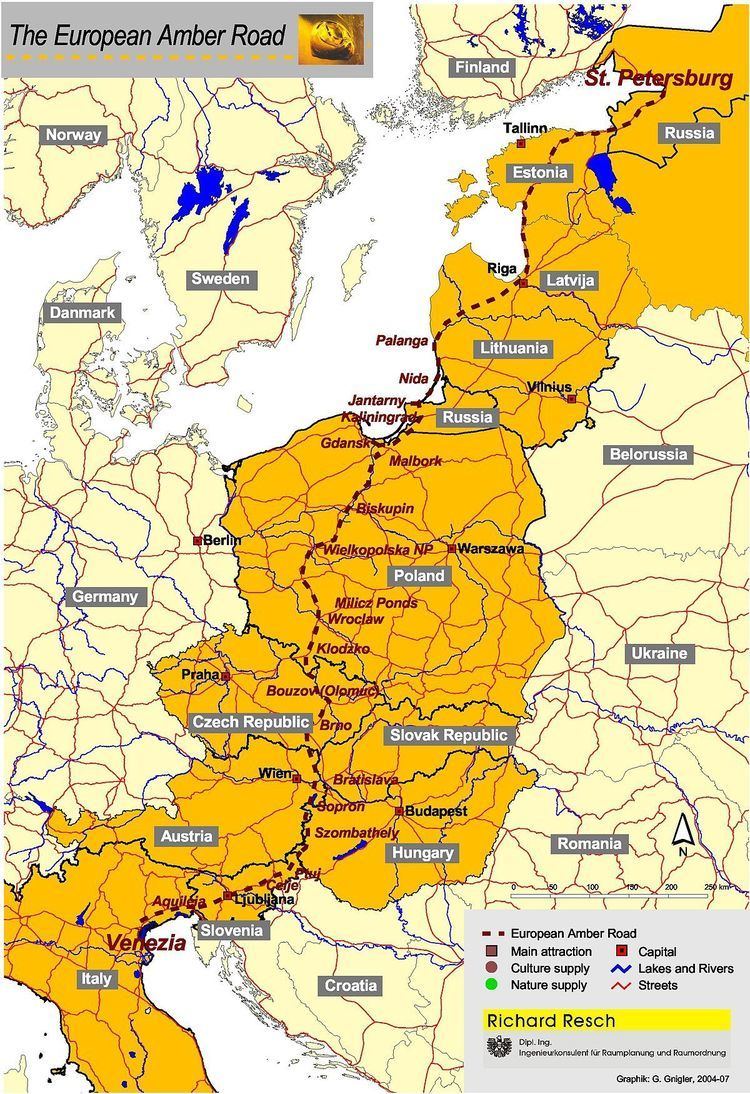 | ||
The Amber Road was an ancient trade route for the transfer of amber from coastal areas of the North Sea and the Baltic Sea to the Mediterranean Sea. Prehistoric trade routes between Northern and Southern Europe were defined by the amber trade. As an important raw material, sometimes dubbed "the gold of the north", amber was transported from the North Sea and Baltic Sea coasts overland by way of the Vistula and Dnieper rivers to Italy, Greece, the Black Sea, Syria and Egypt thousands of years ago, and long after.
Contents
- Radtour bernsteinstra e olm tz br nn 2012 amber road cycling path austria slovakia czech republic
- Antiquity
- Names
- Overview of known amber finding places in Europe
- Central Europe
- Germany
- Switzerland
- The Netherlands
- Belgium
- France
- Southern France and Spain
- Modern use of Amber Road
- References
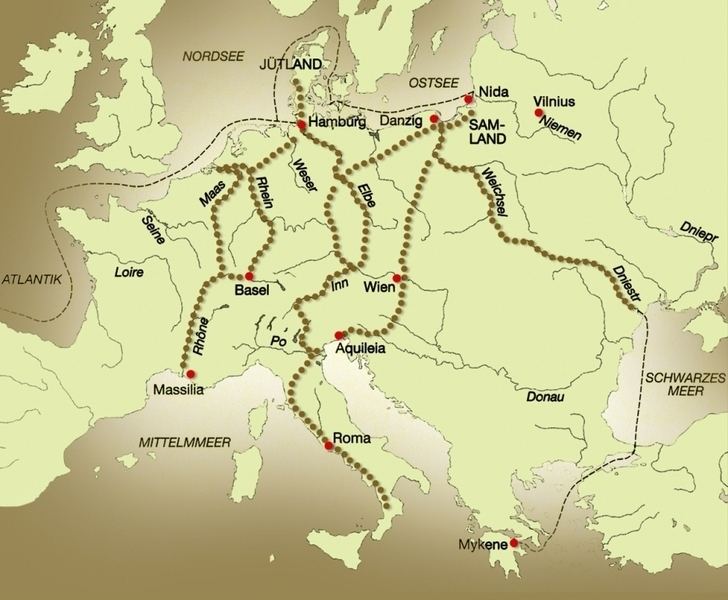
Radtour bernsteinstra e olm tz br nn 2012 amber road cycling path austria slovakia czech republic
Antiquity

From at least the sixteenth century BC amber was moved from Northern Europe to the Mediterranean area. The breast ornament of the Egyptian pharaoh Tutankhamen (ca. 1333-1324 BC) contains large Baltic amber beads Heinrich Schliemann found Baltic amber beads at Mycenae, as shown by spectroscopic investigation. The quantity of amber in the Royal Tomb of Qatna, Syria, is unparalleled for known second millennium BC sites in the Levant and the Ancient Near East. Amber was sent from the North Sea to the temple of Apollo at Delphi as an offering. From the Black Sea, trade could continue to Asia along the Silk Road, another ancient trade route. In Roman times, a main route ran south from the Baltic coast through the land of the Boii (modern Czech Republic and Slovakia) to the head of the Adriatic Sea (modern Gulf of Venice).

The Old Prussian towns of Kaup and Truso on the Baltic were the starting points of the route to the south. In Scandinavia the amber road probably gave rise to the thriving Nordic Bronze Age culture, bringing influences from the Mediterranean Sea to the northernmost countries of Europe.
Sometimes the Kaliningrad Oblast is called the Янтарный край, which means "the amber area".
Names
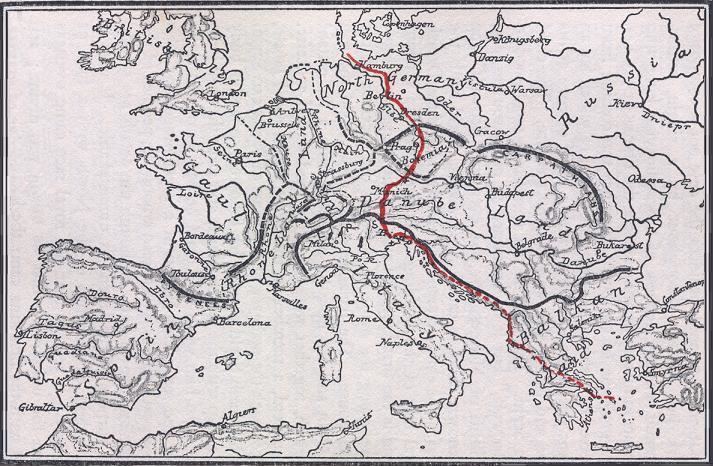
Overview of known amber finding places in Europe

Amber roads connect amber finding locations to customer sites in Europe, in the Middle East regions and in the Far East.
Central Europe
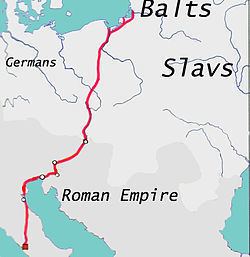
The shortest (and possibly oldest) road avoids alpine areas and led from the Baltic coastline (nowadays Lithuania and Poland), through Biskupin and what is now Wrocław, passed the Moravian Gate, followed the river Morava, crossed the Danube near Carnuntum in the Noricum Province, headed southwest past Poetovio, Celeia, Emona, Nauportus, and reached Aquileia at the Adriatic coast. One of the oldest directions of the last stage of the Amber Road to the south of the Danube, noted in the myth about the Argonauts, used the Sava and Kupa rivers, ending with a short continental road from Nauportus to Tarsatica (Trsat, Rijeka) on the coast of the Adriatic.
Germany
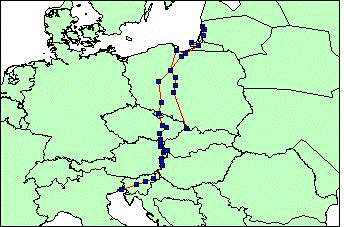
Several roads connected the North Sea and Baltic Sea, especially the city of Hamburg to the Brenner Pass, proceeding southwards to Brindisi (nowadays Italy) and Ambracia (nowadays Greece).
Switzerland
The Swiss region indicates a number of alpine roads, concentrating around the capital city Bern and probably originating from the borders of the Rhône River and the Rhine.
The Netherlands
A small section, including Baarn, Barneveld, Amersfoort and Amerongen, connected the North Sea with the Lower Rhine.
Belgium
A small section led southwards from Antwerp and Bruges to the towns Braine-l’Alleud and Braine-le-Comte, both originally named "Brennia-Brenna". The route continued by following the Meuse River towards Bern in Switzerland.
France
Three routes may be identified leading from an amber finding region or delta at the mouth of the River Openia towards Bresse and Bern, crossing the Alps to Switzerland and Italy.
Southern France and Spain
Routes connecting amber finding locations at Ambares (near Bordeaux), leading to Béarn and the Pyrenees. Routes connecting the amber finding locations in northern Spain and in the Pyrenees were a trading route to the Mediterranean Sea.
Modern use of "Amber Road"
There is a tourist route stretching along the Baltic coast from Kaliningrad to Latvia called "Amber Road".
"Amber Road" objects are:
In Poland a north–south motorway A1 is officially named Amber Highway.
